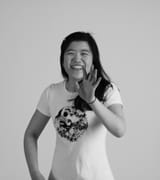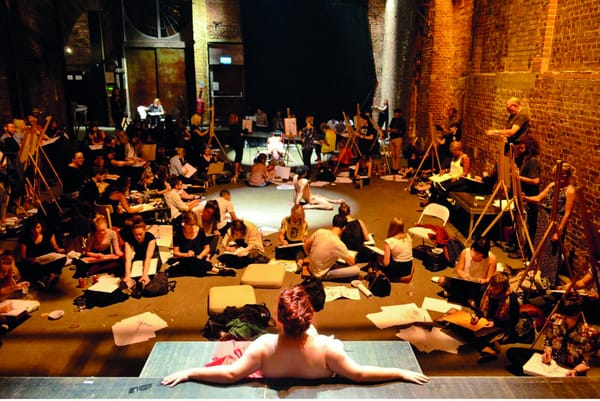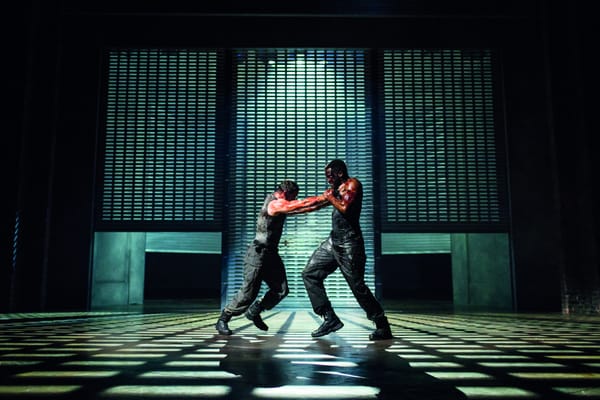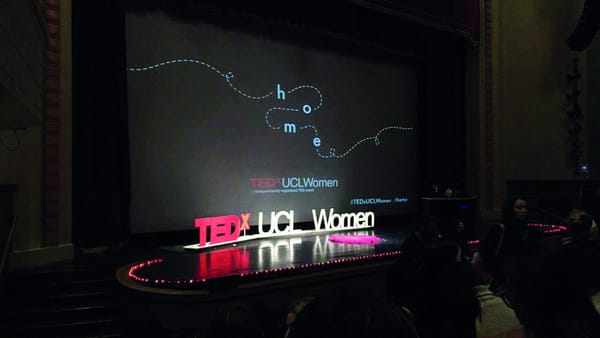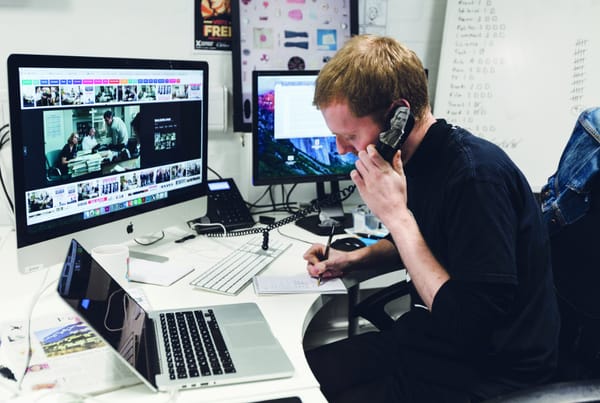Clash of Cultures: Phoenix Editors special
In our regular series, we ask the new Phoenix Editors how they manage to balance arts and science at Imperial.

Phoenix, Felix ’s sister arts publication, returns this week with a teaser 8-page pullout. Arts Editors Indira Malik and Adam Gellatly and Felix Editor-in-Chief Fred Fyles talk to Phoenix Editors Liliane Laborde-Edozien, Catherine Webb, and Joy Aston about their plans for the magazine and their love of science and art.
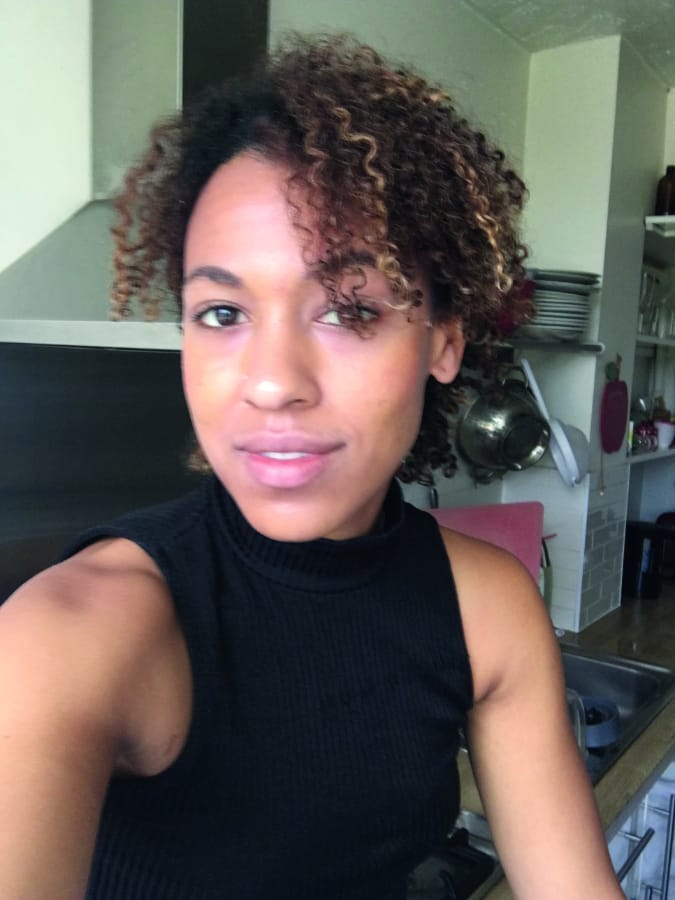
LILIANE AND INDIRA
Indira: Can you tell us a bit about what Phoenix is?
Lilliane: Phoenix was originally started by H.G. Wells and was at some point discontinued, and then brought back, not too long ago, to be the arts magazine, and pay homage to its history and founder.
I: And what inspired you to get involved with the editorial team and work with Phoenix?
L: Despite coming from scientific training, I’ve always identified myself as an artist. That’s a massive part of my identity – this weird scientist-artist hybrid. I knew I wanted to be involved with the arts, and maintain that part of my identity. I saw this opportunity, and I just felt like I had to give it a shot. And here I am.
I: This week, we have an eight-page pull-out, a kind of ‘Mini-Phoenix ’ for this term. Could you tell us a bit more about what’s going to be in it, and what we can look forward to?
L: This week, it’s a smaller, more condensed version, because it’s a kind of a taster. We’ve kind of established what you’ll normally find in it. You’ll always have a spotlight on an artist, where we will highlight a specific artist who’s a student at Imperial, and it will include an interview, a chat, and a huge display of their work. There will also be a feature article, where we will touch upon something relevant to the arts field and to what’s going on in today’s world. Then there’s a gallery portion, where we have a curation of several artists and several pieces – that can include anything that we can tap a 2D version of. It can be flash fiction, poetry, photography, photographs of sculptures, or paintings.
I: What’s going to be the feature article this week?
L: This week we are exploring what we as a society are willing to forgive for the sake of art and for the sake of genius. We’re exploring artists who are successful, and renowned for their work, but have a darker history that we don’t pay any attention to. We look at whether there will be a future where we don’t tolerate monstrosity for the sake of someone’s beautiful painting or beautiful film; and I find, that we’re generally more willing to forgive a man for the sake of art.
I: Do you think the rules are different for women artists?
L: A good example is Jean-Paul Sartre and Simone de Beauvoir, a couple engaged in a polyamorous relationship, who were both philosophical writers. De Beauvoir was under much more scrutiny for her polyamorous lifestyle than Sartre. Sartre was quite notorious for not necessarily treating de Beauvoir very well, but we forget that because he has Huis Clos, and several other pieces of literature that we love. De Beauvoir was under a lot of scrutiny at the time for her lifestyle, even though they were engaging in the same lifestyle. So I think there is a bit of a double standard there.
I: Coming to somewhere like Imperial, where we’re primarily a science university, did you face any challenges in putting together what you have so far, or do you envisage any challenges going forward in getting enough material for an arts magazine?
L: I think initially, especially if you’re not thinking creatively, there are a lot of challenges on the surface. As you said we’re in a science university, who has time for art? But I find for a lot of people, that’s not a unique experience, a lot of people feel tugged in two directions.
I always saw the scientist as an artist and the artist as a scientist. I would hang out with dancers and actors, and nobody had any idea that I was a science major, they thought ‘oh, you’re not studying philosophy?” But when I was with them, and I saw how passionate and diligent they were with their craft. I thought there were so many parallels with science, and how you would approach science. And it was the same with scientists; watching them, I saw them creating art. I fell in love with science for romantic reasons – for me science is just discovered magic. So, for me, the parallels are not much of a stretch.
Imperial students aren’t incapable of creating art, the art is juts a little different. Like growing fungi on a petri dish and taking pictures of it – that’s art. The art of nature, of life, and of the research.
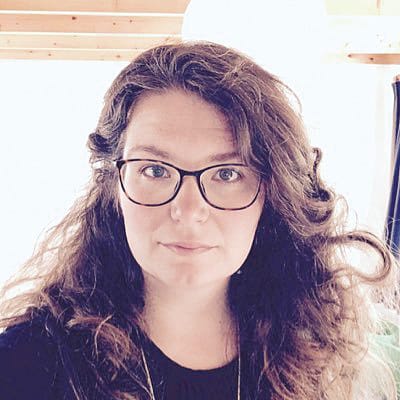
CATHERINE AND ADAM
Adam: Can you tell us a bit about yourself, what you do at Imperial and your role in Phoenix?
Catherine: I’m a Masters student on the Science Communication course. I did a Biology degree at Manchester, and then I had a couple of jobs: a research job, I worked in a blood bank. Then I did a PGCE, and I was a teacher for quite a while, in primary schools, eight years in total. Then I was a sort-of unwilling housewife and stay-at-home mum in California for a few years. I couldn’t have a job in California because I didn’t have a visa. So I did that for a few years, and then I came back, went back into teaching.
I really like teaching, I like kids, I like the creative aspects. But when I got back from California, the system had changed to a point where I felt that to do a good job as seen by the government I would almost be torturing children into making them learn things that are useless and irrelevant – and research backs me up on that.
I was on my way to work one day, in the dark at 6am, waiting for the tube, and I was like ‘ugh, why did I become a teacher?’, and I thought ‘I think I became a teacher because I couldn’t afford to do any postgraduate study’ but I could afford to do that now.
The other reason why I became a teacher was because I’m really passionate about people having a better understanding of science and scientific process, and more critical thinking skills to evaluate what they see in the media. So, I thought I would hand in my notice and I did hand my notice in that day, then I thought ‘shit, I haven’t got a job now’. I noticed there was this course at Imperial that was really interesting, so I thought I’d give it a go.
A: What are your interests in the arts? Is it something you’ve been interested in, is it a more recent thing?
C: I’ve always been interested in writing, I’ve always written. I’ve written lots of short stories and a couple of books for children. I like going to see art, but I like it because I don’t really understand it. In terms of visual arts, I don’t have a lot of background in that kind of thing, but I think the driving force of science and the driving force of arts are the same thing: curiosity. Trying to find out about the world, and then trying to represent that, whether you’re doing that through scientific method, or through drawing, or writing, or photography. It’s a lot of the same skills, so to be a good artist you need to be a good observer, and to be a good scientist you need to be a good observer. I feel like they’re all in the same... I think it’s an artificial distinction between science and arts.
A: Do you notice any similarities or differences in terms of how art is perceived in Manchester, compared to here at Imperial?
C: I’d say there was a livelier scene of what I’d be more involved in, like a music scene. But that’s talking about the late 90s, so there’s a whole different scene of how students are as well. Then I went to Cambridge, which was another kettle of fish. I did my PGCE there, and that’s so upper class – everyone from private schools, I wouldn’t have felt comfortable doing this [editing Phoenix] there. I would have felt that loads of people would have said ‘who the fuck do you think you are?’
A: How then did you get involved with Phoenix?
C: An email came around from Fred, and I saw H.G. Wells mentioned, and I was like ‘yeah, might as well apply for this’. I say I’ve got more confidence about trying stuff out now I’m older, I probably wouldn’t have tried it if I weren’t a mature student.
A: That’s interesting. I think a lot of people who come to Imperial and study science or engineering have an interest in art, but are too intimidated to get involved with it.
C: Yeah, they should get involved with it! Go for it, like why not? If it goes wrong, nothing is going to happen, nobody’s expecting anything, just chuck it out there, see if it comes back. What I really want to see [in Phoenix] is a wider participation – see people who don’t think of themselves as being arty sending stuff in and getting it published.
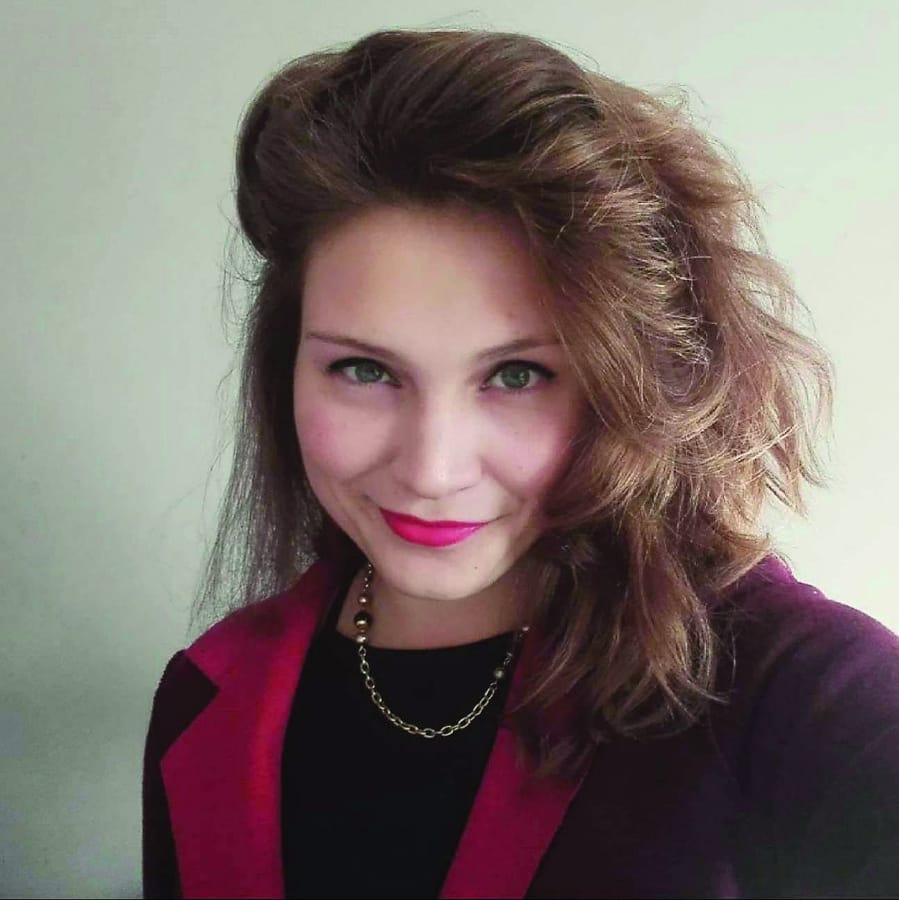
JOY AND FRED
Fred: I thought we could kick off with you telling me a bit about you ‘journey’ – how did we get to this point?
Joy: So I studied biology for my undergrad, and then after than I took a year out. I worked, I did some volunteering with an environmental charity, and I worked in a cafe, and I went cycling for three months. Then I came to Imperial; I’m a part time student, so I’ve been here a year now, this is my second year doing Science Communication.
F: What made you decide to apply for Phoenix Editor?
J: I’ve always been creative – my great aunt taught me to paint when I was really little – but as soon as I did a science degree it went straight out of the window; I was not creative at all. The course encourages us to be creative, and it’s just so new, so I thought I’d have a go at something, and find other people who are being creative, and put them all in one nice place.
F: Was there a lightbulb moment for you in terms of your interaction with the arts? Where you switched on to it, and you thought ‘I do really enjoy arty things, as well as science’?
J: In my final year of my undergrad I went out to Panama, and I was doing my undergrad research project in the jungle, which was great. I took a sketchbook with me, just because I thought there was nobody here to judge how rubbish I’ve become after three years of not drawing. It was really simple, just pen and ink, almost like biro pen, but it was just nice. And then I submitted it as part of my report, and they loved it. It that was really nice feedback. It was wholesome and good.
F: When you were in your undergrad did you take part in artistic societies or do artistic things, or was there never really enough time?
J: No, I did volunteering for a listening charity, called Oxford Nightline. I volunteered for them for two years which took up a lot of time. I also did so many extracurricular things; I organised a ball, I was housing officer, I just did too many things. But none of them were creative in any way. I distanced myself from that and it didn’t feel right. But drawing takes so much practice. Even today, the only drawings I show people are maybe one out of 50 that have maybe gone right.
F: I know when Indira spoke to Liliane, she’s quite passionate about how she approaches her scientific practice as an art form. Is that something you do as well, or do you keep them quite separate in a way?
J: I feel science education, even at school, they remove it completely [from the arts]. Science is treated as this discrete, individual thing, and there’s a ‘set’ way to do science. Obviously that ties into the way the publication structure works: you’re not going to be able to publish a paper that doesn’t have a methodology section, or has a nice painting. So, I feel a lot of people see science as this immovable, rigid structure; that’s what my experience was.
F: And moving back to Phoenix, we’ve got a very exciting mini taster in Felix this week, and then next term we’re going on to the full magazine. But for this taster, what can we expect from it? What are you excited about?
J: We’ve got a nice interview with Agnese, who took the winning photograph of the Queens Tower. She talks about her photograph, and what she’s done in the past, because she’s had a bit of a research career, so that’s really exciting.
Whether you have a completed piece, something in mind, or just want to get involved, the Phoenix Editors want to hear from you: phoenix@ic.ac.uk.

